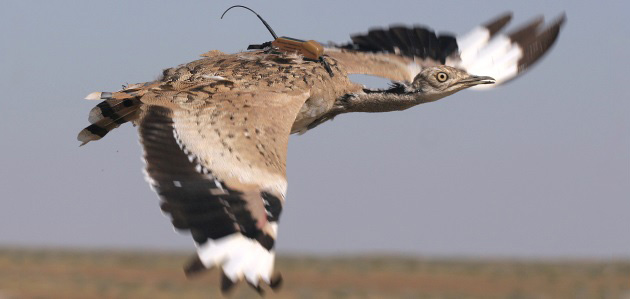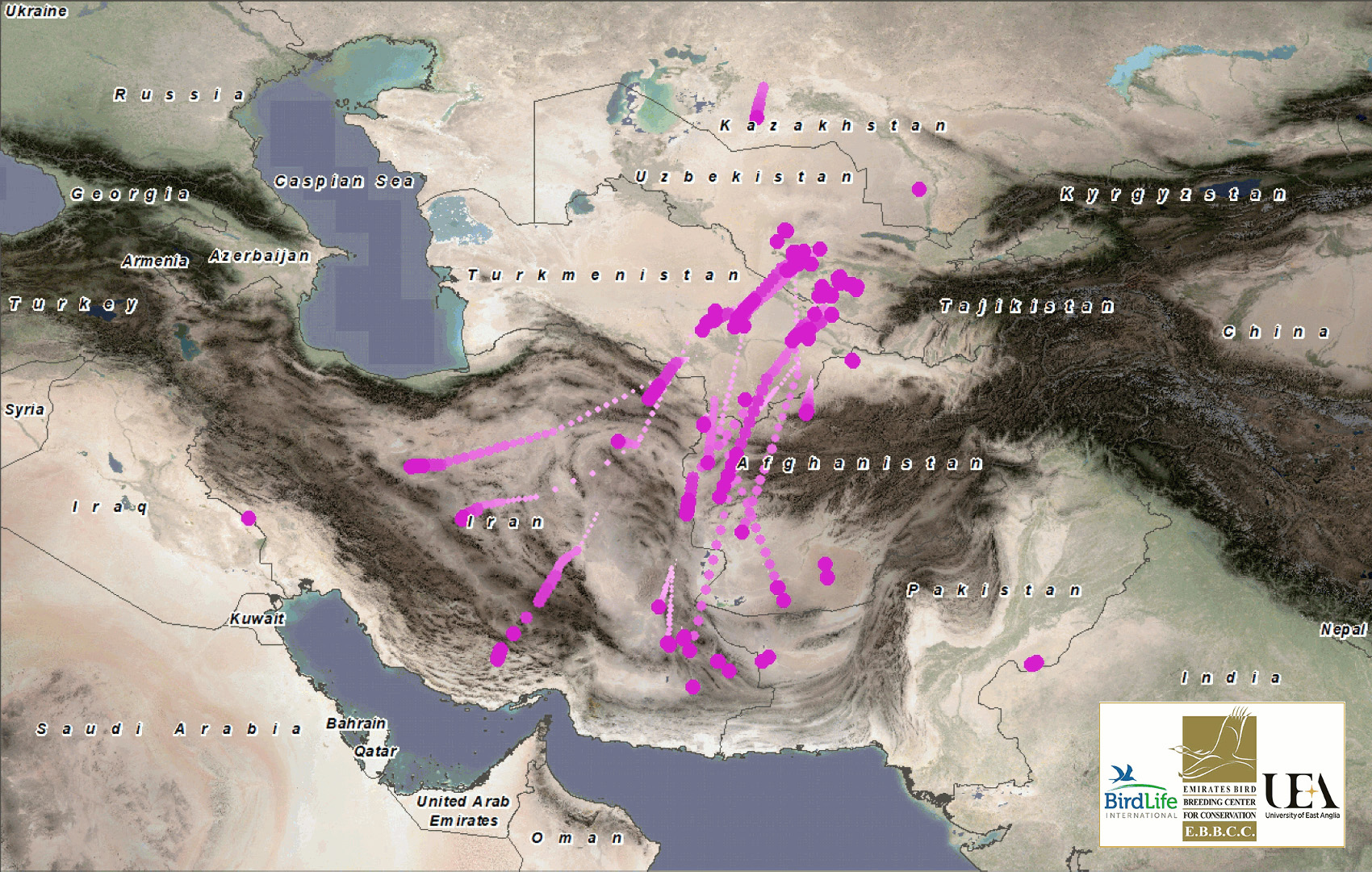← Back
Asian Houbara conservation

The Asian houbara is a bird highly adapted to its arid environment, with perfect camouflaging feathers and few natural predators. However, it is traditionally hunted using falcons in the Arabic peninsula, and with the increase of this hunting they are now threatened. Argos helps in defining a conservation strategy.
A falconry-hunted species
Asian Houbara (Chlamydotis macqueenii) is an omnivorous migrating bird living in arid environments, part of the bustard family. The color of their feathers blends them perfectly in their semi-desertic habitat. It can be found from the Arabian Peninsula through Central Asia to China. Central and Eastern populations migrate in Western-South Asia and the Middle East in Winter, covering up to 500 kilometres per day, travelling mainly by night at steady speeds. For centuries they were hunted for food using falcons in the Arabian Peninsula. But nowadays falconry is increasing but also hunting with firearms, poaching and illegal trapping for the training of falcons. These lead to breeding rates below mortality ones, threatening the population of Asian houbara (categorised as Vulnerable on the IUCN Red List), now declining by 9.4% per year in Uzbekistan.
More info about birds tracking
Tracking the birds
170 Asian houbara, both wild and bred in captivity were tagged with Argos PTTs to try and determine the sustainable rate of harvest as well as the impact of releasing bred birds. Results show that most of the mortality occurs in Winter, and this due by half to hunting and poaching, with current rates of hunting double the natural sustainable rate. The introduction of captivity-bred birds, one of the proposed solutions, is not without drawbacks (reduction of genetic diversity, risks of diseases, of domestication, worse fitness for survival, and also giving the impression that the species is not so threatened by artificially increasing the sightseeing of birds…), and is extremely expensive. Moreover, a recent study [Dolman et al, 2018] shows that captive-breeding alone cannot make unregulated hunting sustainable. And even with regulation, it would need to release more birds than there are wild ones (more than 170 %).

Tracking wild Asian houbara during migration — see the animation (Credits Daniel Salliss & R. J. Burnside)
Conservation recommendations
Sustainable hunting must be developed to conserve the species while maintaining the tradition of falconry in the Arabian peninsula, an important cultural one. The programme of scientific research lead by Prof. Paul Dolman , U. East Anglia aims at developing a model approach to sustainable management. Recommendations from the observations made in the past years are to regulate the hunting in wintering areas, to stop trapping the birds and to continue releasing captive-bred birds, but at a limited rate.
Links
Houbara Conservation & Sustainable Hunting, an evidence-based approach
@SustainHoubara (Twitter), @SustainHoubara (facebook)
References
P.M. Dolman, N.J. Collar, R.J. Burnside, Captive breeding cannot sustain migratory Asian houbara Chlamydotis macqueenii without hunting controls, Biological Conservation 228 (2018) 357–366 https://doi.org/10.1016/j.biocon.2018.10.001
R.J. Burnside, N.J. Collar, P.M.Dolman, Dataset on the numbers and proportion of mortality attributable to hunting, trapping, and powerlines in wild and captive-bred migratory Asian houbara Chlamydotis macqueenii, Data in Brief 21 (2018) 1848–1852
Photo: An Asian houbara equipped with an Argos PTT (Credits R. J. Burnside)
